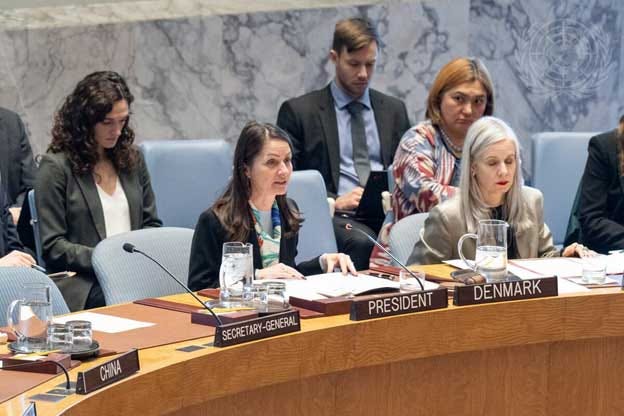Re Education : Issue #18 - Is OBF the future for education funding ?
Outcomes based funding in education
(If this message does not format properly in your email - please click the “Read in App / View in Browser” above, top right).
Introduction
There’s a crisis in funding for education development in the global south which has been brewing for years (a shortfall of $97bn p.a. according to the World Bank). It’s been exacerbated by the decimation of USAID and the reduction in education development budgets by FCDO, the EU and many other donors. This intensifies the pressure to demonstrate measurable impact for the monies that do remain.
Outcomes-based funding (OBF) claims to offer a model with a “no-win-no-fee” guarantee : if outcomes are not achieved, payments are not made. Supporters believe the model can also raise money and attract new non-traditional funders. If you work in the area of donor / philanthropist / government funded education projects, you need to know about OBF.
The full article, looking in depth at those claims is accessed via the button below. A summary is given in this email.
My deep thanks to those who spoke to me anonymously for the background to this - all thoughtful and generous with their time. Quite a few disagree with some of the conclusions I have drawn : food for a debate.
Andy Brock, April 2025
Subscribe for free and receive each issue of Re Education automatically to your inbox.
Is OBF the future for education funding ?
The OBF Model
Almost all donors have some version of payment-by-results, but OBF has particular characteristics worth examining. This analysis looks at OBF education models in Sierra Leone through the Sierra Leone Education Impact Challenge (SLEIC) managed by the Education Outcomes Fund (EOF), and in India where Educate Girls are managing the Maitri Project and a consortium of partners is supporting the LiftEd Project.
Characteristics of OBF Models
There are a number of variations, including Social or Development Impact Bonds (SIB/DIB) but I use OBF broadly to cover a model which, in its simplest form, has four parties :
a) a funder who is willing to put capital at risk up front, for a return
b) an implementer who delivers the programme – and the agreed outcomes
c) an outcomes payer who only pays out if the pre-agreed outcomes are achieved
d) a “programme manager” who selects the implementers, manages the evaluation and facilitates the relationship between implementers and outcomes payers.
The achievement of the outcomes is determined by an independent evaluation, usually a Randomised Controlled Trial (RCT), conducted by an independent third party and payments are linked to specific improvements in the pre-agreed learning outcomes – for example, in Sierra Leone by fractions of standard deviations of improvement in learning outcomes.
By linking payments to measurable improvements in learning outcomes OBF aims to incentivise a focus on what matters : results. In the words of EOF :
“No longer do funders pay for a pre-agreed list of activities and set programming from education providers. Instead, they define what outcomes they want to see, give providers the flexibility to respond to the needs of the beneficiaries, and only pay for the measurable impact these interventions deliver.” (EOF ; emphasis added)
Not only does OBF concentrate minds on what is important, the argument continues, it creates greater efficiency by incentivising providers to find the most cost-effective way of delivering the agreed results and that, in turn, promotes innovation and flexibility as providers are incentivised to find better ways to reach the agreed outcomes. Overall, accountability is enhanced and funders pay only for results not for effort.
How do these claims stack up ?
Incentives, Risk, and Trust: The “theory of change” suggests that only results matter, but in practice, programme managers take a lot of interest in the processes. Implementers seem more often motivated by their internal professionalism and protecting organisational reputation than by the commercial incentives of financial loss. That’s because in an OBF model risk is effectively outsourced to specialist finance companies like UBS Optimus and Bridges Fund Management who provide the seed capital to implementers. But, can you effectively outsource this motivation to a non-technical third party ? It’s clear that implementers, who generally have a good relationship with investors, are well aware of the costs to their partners of failure to meet agreed outcomes. This also reveals a trust conundrum at the heart of OBF – if implementers are so trusted to achieve results because of their knowledge what’s the purpose of paying only on outcomes? Losses, if they occur, can involve not just nominal overhead, but real costs (salaries / expenses) already expended trying to achieve results.
Innovation and Flexibility : OBF champions claim to encourage innovation, but it appears to be within very prescribed limits – the most innovative aspect of OBF may be the funding model itself. Real changes to fundamental aspects of education systems such as paying supplements to teachers or changing the school day are off-limits. In many cases what appears to be happening is adaptation of existing and proven models, raising the question of how well OBF models can work in new situations with inexperienced implementers ? Evidence from the Maitri project suggests it may be possible – in the right circumstances - and in the LiftEd project a learning year was introduced in recognition that the attempt to undertake systems strengthening required some testing. Some argue that there is innovation in financing local organisations directly and that this can lead to greater local capacity. While that may be true, it is not an innovative aspect of the OBF model. Finally, there may be a tendency to confuse flexibility with innovation. There is no doubt that the OBF model allows for flexibility, course correction, surge support etc. but in other places that is called adaptive programming.
Efficiency: one of the key questions is whether OBF is more efficient than traditional models. Efficiency is the word used, but cost-effectiveness would be more accurate. Is OBF doing more with less or less with less ? Positive results are being achieved in all the cases cited, but at what cost ? There needs to be more public data on cost effectiveness to answer that clearly, though some good examples exist. OBF also seems a complex model with more actors than normal (meaning potential higher transaction costs) and a very heavy emphasis on continuous measurement. The costs of programme managers and independent evaluations are significant but not always transparent (20% in QEI) – and even though it may be argued this is a model in its infancy, that is all the more reason to capture real costs.
Accountability: OBF models emphasize accountability by linking payments to measurable outcomes, contrasting this with “traditional models” where implementers are paid to make inputs without necessarily achieving outcomes. That is a fairly out-of-date characterisation of traditional models. And, in an honest reflection of the evidence in this area, EOF’s website says : “Funders understandably often ask what evidence exists around the effectiveness of impact bonds, and if they are worth the additional costs involved vs. traditional grant financing modalities. However, the impact bond community have grappled with this question of the ‘SIB effect’ for almost a decade, and found it a nearly impossible question to answer robustly.”(emphasis added). That’s understandable, but also weakens the claim.
New Funders: One of the potential attractions of OBF is the possibility of bringing in more money and new non-traditional funders to education in the global south. EOF is explicit in this aim, others seem less certain of this as a major goal of the model. Perhaps more funding from outcomes payers would incentivise a larger number of investors. But, the currently missing outcomes payer at the party is government. If OBF is such a clear winner, why isn’t government playing a major role as an outcomes payer ? There may be a number reasons around treasury rules, and long-term funding commitments, but, from a political economy perspective maybe also questions around government commitment. Nonetheless, some progress has been seen : Sierra Leone is an outcomes payer of 10% and South Africa of 50% in EOF supported programmes.
Conclusion
The education models referenced here demonstrate strong and positive outcomes that are making a real difference to children’s access and learning outcomes. Implementers recognise the strength of the single-minded focus on outcomes, and benefit from strong support from investors. Some efficiencies have certainly been achieved in delivering both access for girls and learning outcomes in the projects reviewed, and there is a growing body of valuable learning now about cost effectiveness in this space, even if answering the question whether OBF vs traditional models is more cost effective, seems elusive.
Overall, the differences with traditional education projects appear overplayed and the claims for efficiency and innovation need scrutiny. Whether OBF can expand and scale beyond its present confines may depend on resolving the commercial motivation and trust tensions at its heart.
Future development of OBF, judging by the examples in India that appear further advanced, seems to lie in greater collaboration, planning and learning. OBF is likely here to stay, likely even to grow and assume greater importance as available funding for education shrinks. Educators working in this space need to engage positively, and critically, with these models
“”The death of human empathy is one of the earliest and most telling signs of a culture about to fall into barbarism.” Hannah Arendt
News
Analysis from Charles Kenny and Justin Sandefur at Center for Global Development suggests that USAID cuts have left education among the hardest hit and new data from Save the Children International suggest UK aid cuts will lead to an estimated 2.2 million fewer children in school and learning.
The bad news does not end there : Trump is Coming for UNICEF - by Mark Leon Goldberg
In Sindh the government has launched the “country’s first-ever” program to support the education of children of convicted prisoners. Good move.
Women and girls, oppressed by the Taliban, have been doubly hit by the cuts in USAID.

Development
A selection of articles on the aid crisis :
Ben Philipps : Musk is Wrong. Empathy is Not a Weakness | Inter Press Service. Ben makes the case for moral arguments and the “world we want”.
Stephan Dercon : Musk is wrong – foreign aid is how countries show their character to the world | The Independent. Can’t persuade MAGA / Reform ? Try “Great powers do it argument”. One angle on soft power.
A post by Neil McCulloch got a lot of engagement : In defence of aid. The article and the comments are well worth skimming. His thesis is the need for local control - but, for a caveat, see Dercon on elite bargains (Gambling on Development).
Unlock Aid is taking a radical view, trying to align with the current administration to persuade them of a new direction, including making performance based contracts “the norm”. Nothing specifically on education, but health gets a shout. 600 people voted and the top suggestions was : Launch a Pay-for-Results Health Fund, see here.
And, from someone who likes to swim against the tide… Lee Crawfurd says “Don’t Give Up On Aid Just Yet”.
I liked this blog from Peter Evans which presented a few thoughts rather than a grand analysis - but he has a nice turn of phrase and his thoughts on “aid lipstick” are worth reading .
In response to my tub-thumping for Amory Gethin’s work (see last issue), an anonymous reader has written a welcome reminder :
I do caution against an over-interpretation of the Gethin paper. This is a telling par: Sub-Saharan Africa and Latin America are the two world regions where education explains the highest share of growth, mainly because these are the two regions that have witnessed the lowest growth. Indeed, education explains by construction over 100% of growth in countries where growth has been zero or negative, as in any growth accounting exercise. The interpretation is simply that other factors than education—such as civil wars and economic crises—have affected growth negatively, leading to a negative counterfactual growth rate. Another way of looking at the paper is that because growth has been so weak overall, the contribution of education is relatively high.
Voices from the front
Among Asean countries, Malaysia has the best score when it comes to men and women accessing education, but are the lowest in the region for political empowerment and representation for women, based on the Global Gender Gap 2024 Insight Report by the World Economic Forum (WEF).
Daisy Christodoulou who writes a Substack called “No More Marking” has posted the results of an essay marking experiment with AI that she says is a game changer in terms of accuracy. It was run in the UK - but probably coming to a school near you soon !
According to a post by Dave Evans reporting on a new education report, there are 25,000 schools in the Philippines without a school principal.
Harry Patrinos reports in The Conversation that Mississippi, once ranked near the bottom of U.S. education standings, has dramatically improved its student literacy rates. The main reason ? Investment in teachers and teacher support.
Voices from the rear
(Gray and Published Research)
Interesting article in the UKFIET blog from Jane Doka called : “Is truth important in research? Unpacking half-truths and misrepresentations in the process” in which the author seems surprised at “courtesy bias” (admittedly an extreme version - lying). It reminded me of the famous Robert Chambers quote :
“A rural survey is the careful collection, tabulation and analysis of WILD GUESSES, HALF TRUTHS and OUTRIGHT LIES meticulously recorded by gullible outsiders during interviews with suspicious, intimidated but outwardly compliant villagers.'
Excellent post from Lee Crawfurd showing aid is evaluated 10 times more than other government spending in the UK.
The CIES Conference went ahead in Chicago in March. Unsurprisingly, participants reported the mood to be largely sombre. Samantha Ross of Link Education International posted a good reflection on practice on the ground vs theory.
Jessica Bergmann, a Research Specialist at UNICEF is calling for :
any evidence of linkages between co-creation and participatory approaches and data/evidence use, particularly in the education sector, to include in a lit review. See here for the post.
History Lessons
Continuing the theme of payment by results - Zoe Hope Bulaitis’s book : “Value and the Humanities : The Neoliberal University and Our Victorian Inheritance” has a chapter called “A History of Payment by Results: Lowe’s Code (1862) and the Browne Report (2010)”. It provides a fascinating historical lens on the subject of PbyR, 160 years ago. Here’s a synopsis of one of the key points :
In 1862 on the back of the Newcastle Commission, Robert Lowe, 1st Viscount Sherbrooke and a member of the Privy Council on Education, introduced a system of payment by results to English schools known as Lowe’s Code. Payments to schools were made purely on the basis of assessed learning in three areas : reading, writing and arithmetic. As a result, government spending on education fell from £750,000 per year to less than £500,000. Motivation in the teaching profession collapsed and the experiment was abandoned 30 years later.
…and finally
In a month when UNESCO launched a report called on Education and Nutrition, straplined “Learn to Eat Well and Eat Well to Learn Well”, Jon Foster-Pedley posted an article on Africa’s agricultural shift that was illustrated with this photo - seemed apposite.
If you know someone who would be interested in reading this newsletter, please pass on, by clicking the share button below. Subscription is free - subscribers receive each issue of Re Education automatically.










I think one more important aspect of OBF is its potential to put impact to a dollar -- eventually be able to say "what's the $ cost for getting one SD improvement in learning outcomes" "how many girls can be brought back to school in one $"